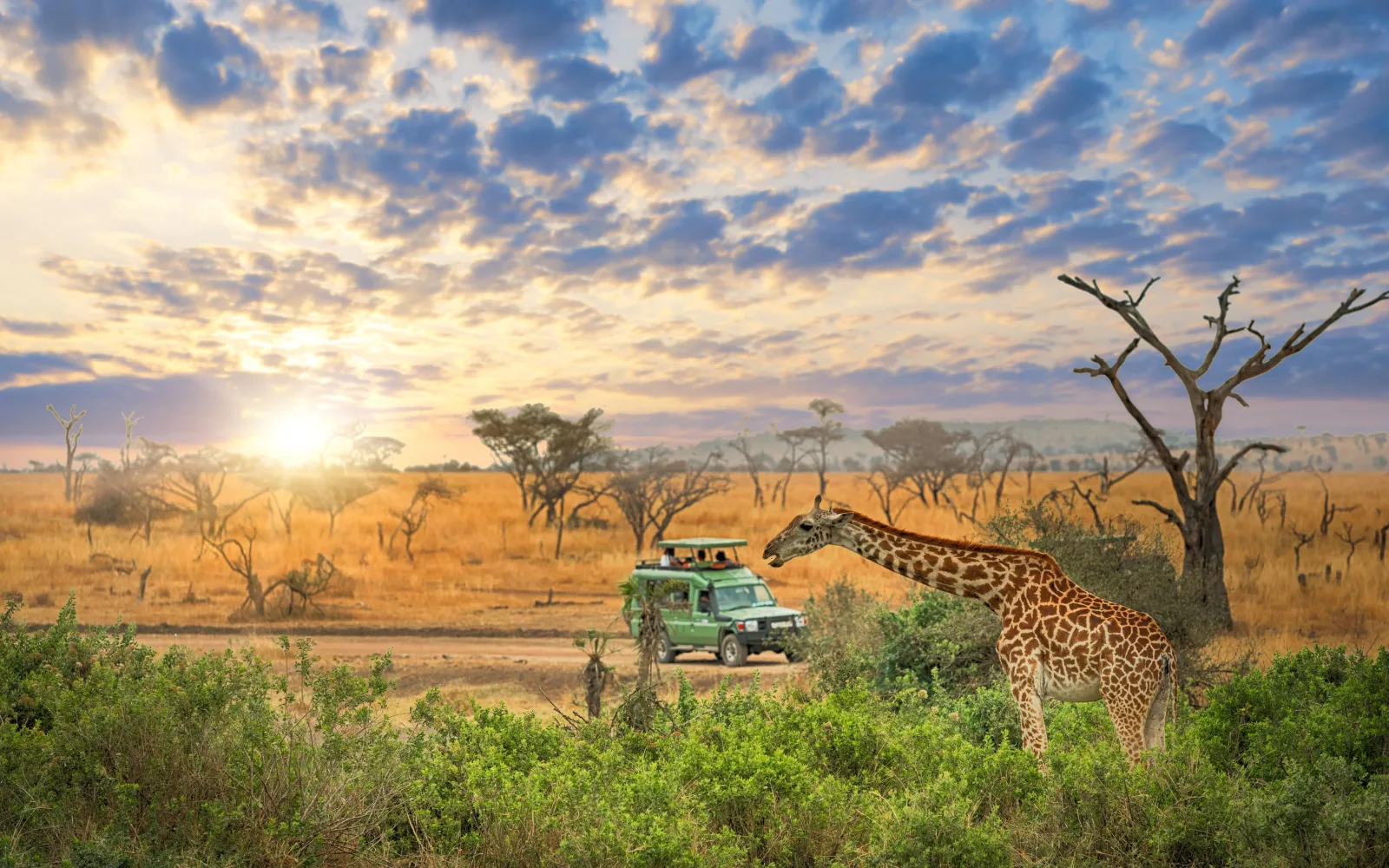What's the best time for a safari in Tanzania?
From July to September, Tanzania enjoys its driest weather with minimal rainfall, making it the prime time for wildlife viewing. With comfortable temperatures around 74°F in September, it’s ideal for safaris, but pack layers for chilly mornings and nights.
This period offers the best opportunities to see the “big 5” and numerous other animals, although higher prices and the need for advanced bookings are trade-offs for the peak safari season’s popularity.
Going on safari in Tanzania can be the trip of a lifetime if you know the best time to go and when to avoid planning your trip.
Whether you’re planning your trip based on the best overall time to go, budget, or crowds, keep reading to see the perfect time of year for your trip goals!
The Best Time for a Safari in Tanzania
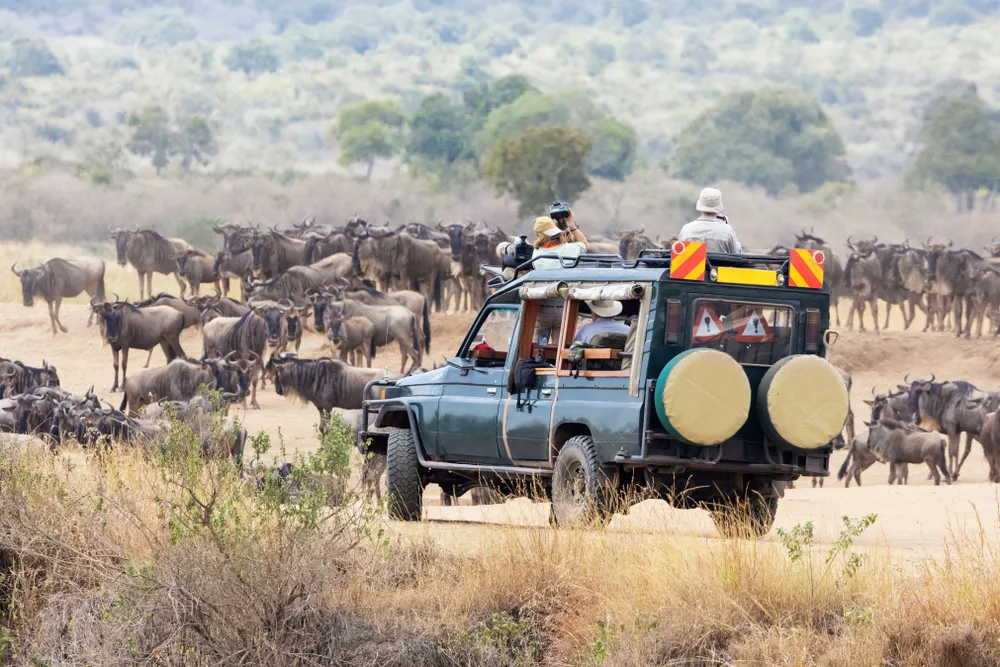
Jane Rix/Shutterstock
The overall best time to safari in Tanzania is from July to September, during its driest period weather and best opportunities for wildlife viewing. It’s perfect for safaris and temperatures are comfortable. Expect balmy highs ranging from 72F (July) to 77F (September) during this time of year.
It can get chilly in the early morning and night, so prepare by packing layers to keep warm. The highlight of going on safari in Tanzania between July and September are the amazing opportunities for wildlife viewing.
This period is by far your best chance to glimpse “the big 5” – African elephants, lions, leopards, buffalo, and rhinos. There are hundreds of other animals you’ll be able to spot this time of year!
On the downside, prices are higher and booking must be done further in advance since this is Tanzania’s peak safari season. You’ll deal with more crowds, but for the best wildlife viewing chances, it’s worth it.
Cheapest Time for a Safari in Tanzania
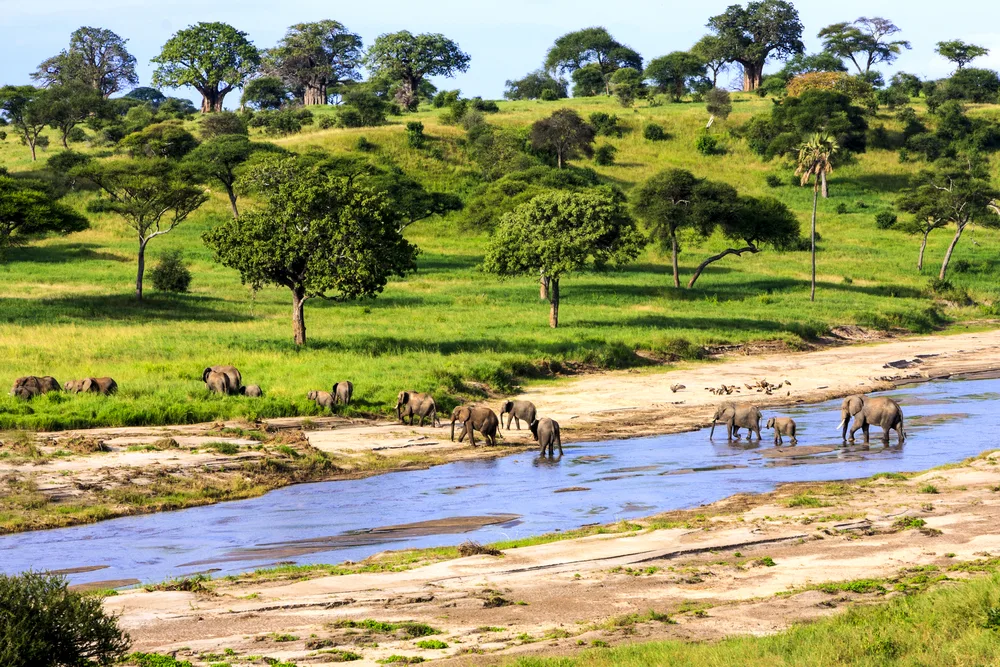
GTS Productions/Shutterstock
The cheapest time for a safari in Tanzania is November through March during the summer green season. Expect more rain, hotter temperatures, and greener landscapes.
The greener landscapes and taller grasses of Tanzanian summers are great for creating picturesque views, but they also reduce your wildlife viewing opportunities during this time of year.
While you’ll reap the rewards of going on safari during the summer with cheaper safari prices, fewer crowds, and better safari booking availability, it’s not the best time to catch views of the big 5 animals in Tanzania.
Instead, consider a shorter safari and leave time to hang out on Tanzania’s beaches, explore the town, and visit the nearby tropical islands Zanzibar and Mafia.
Check out our price guide to learn more about African safari costs!
Least Busy Time for a Safari in Tanzania
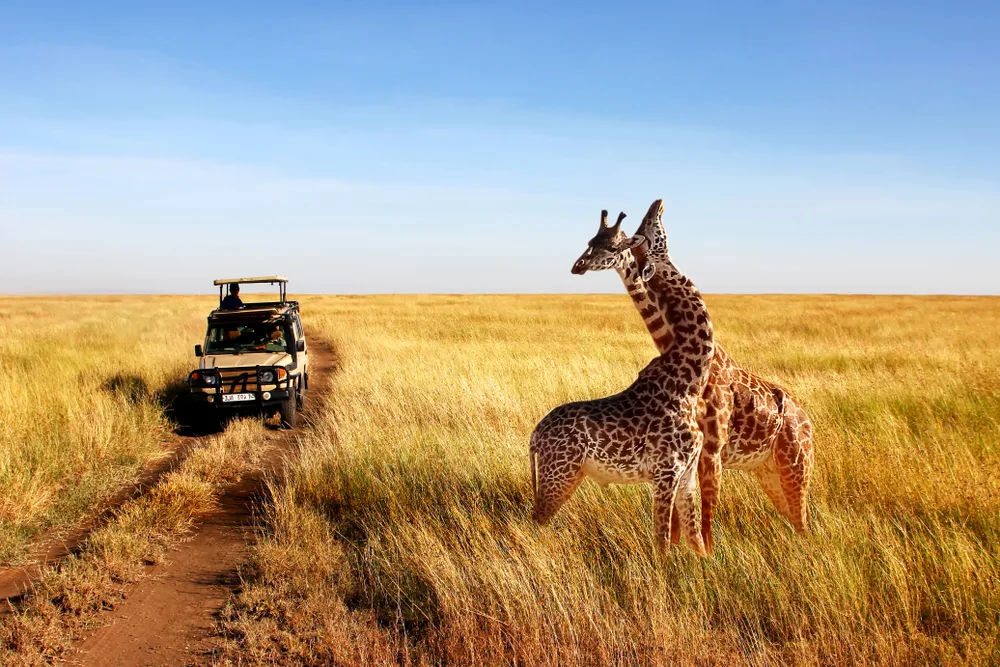
Delbars/Shutterstock
The least busy time for a safari in Tanzania is from March to May. This is one of Tanzania’s off seasons, prone to “long rains.” The long rains or masika in Tanzania are part of the area’s regular climate pattern, dumping huge amounts of precipitation on the area from March to May.
As a result, fewer people come out for a safari at this time of year. If you want the fewest crowds, best booking availability, and lower prices, March to May can be the perfect time of year to come.
But it’s also important to consider the downsides of traveling during this time of year to see if it’s worth it for you. Lush greenery and tall grasses obscure wildlife viewing on safari, you may see more baby animals than adults, and hot temperatures and rain can make safaris less comfortable.
Worst Time for a Safari in Tanzania
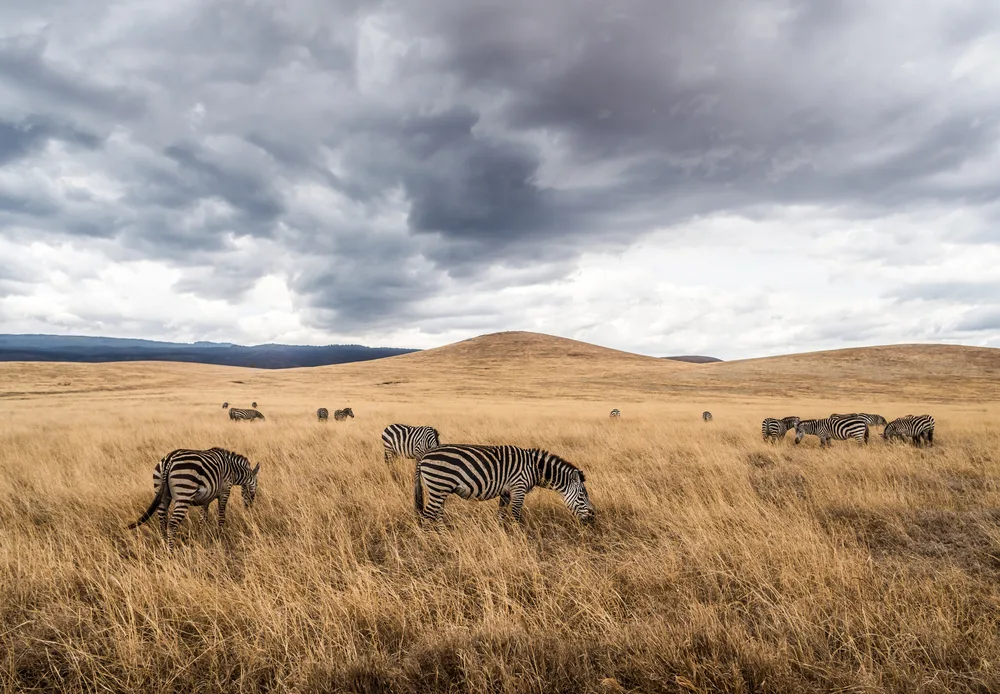
Magdalena Paluchowska/Shutterstock
The worst times to visit Tanzania are in November and December because it’s hot, rainy, muddy, and harder to view Tanzania’s amazing wildlife.
As the first months of Tanzania’s rainy, hotter summer season, November and December create less-than-ideal conditions for safaris. Animals aren’t easily visible in greenery and tall grasses in summer.
Average highs are in the 80s and the area gets nearly 9 inches of rain in this 2-month period known as the “short rains.” Rains happen randomly throughout the day from November to December, and while they’re lighter, they can really put a damper on a safari.
On the bright side, you’ll benefit with lower prices, fewer crowds, more booking availability, and spotting plenty of baby animals at this time of year.
The High Season in Tanzania
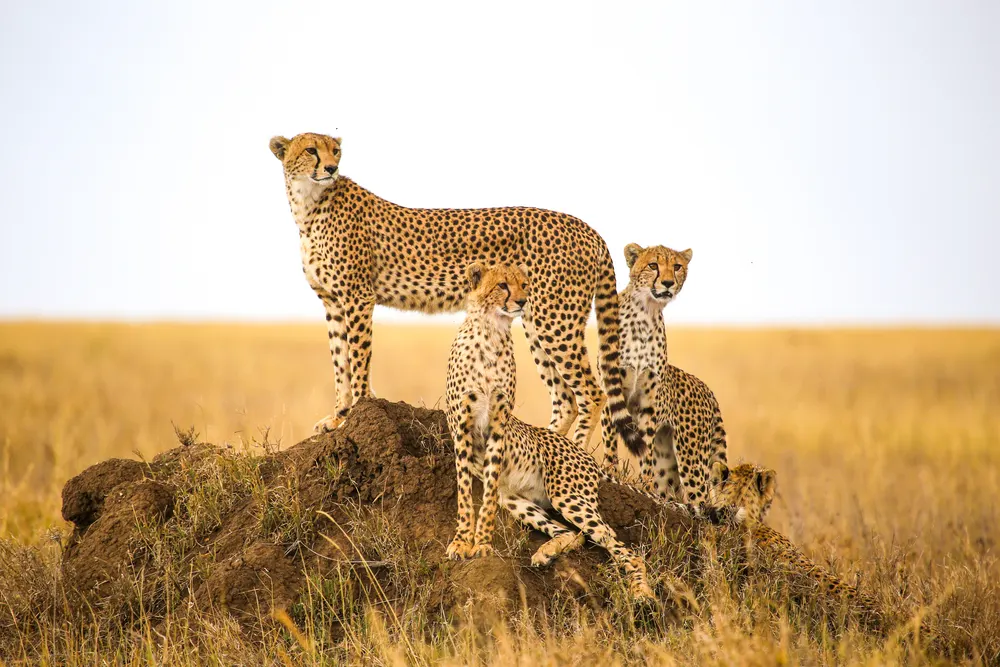
Vaganundo_Che/Shutterstock
Tanzania’s peak or high season is the winter from June to October. This is the dry season in Tanzania when rainfall falls its yearly minimum at around 0.2 to 0.7 inches per month.
The high season in Tanzania is when tourists arrive in droves in time for the best wildlife viewing opportunities on safari.
During the winter high season, Tanzania sees the Great Wildebeest Migration, the green vegetation and grasses dry out to improve wildlife viewing, and high temperatures fall to a comfortable 72F to 81F.
The high season is full of perks and benefits for travelers, but there are also some downsides to traveling to Tanzania during the winter. You’ll pay higher prices starting around July, when the Great Wildebeest Migration begins and safaris explode in popularity.
Since more people are booking safaris and hotels, you’re more likely to run into crowds and lines just about everywhere outside of the deep bush.
Conditions can be dusty and windy at this time of year with very little rainfall. In addition, the mornings and nights are a bit chilly – around 55F to 57F during the high season.
The Low Season in Tanzania
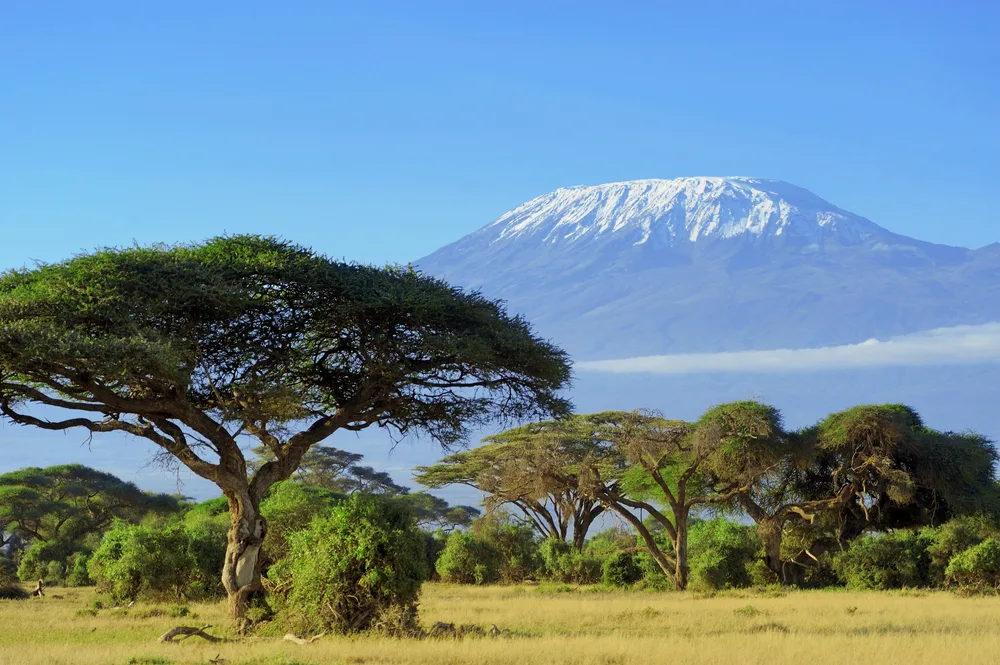
Volodymyr Burdiak/Shutterstock
Tanzania’s low season is the summer from November to March. This is the rainy or green season for Tanzania, which receives the most rainfall of the entire year in these few months.
Rainy summer is Tanzania’s low season for a few reasons. One is the incessant rain creating difficult safari conditions and a lot of mud. Another issue is that all that precipitation encourages fast, lush plant and grass growth.
The greenery makes it much harder to spot wildlife on safari. In addition, you’re more likely to see baby animals and birds than the “big 5” game most people come here to see.
Still, if you enjoy birding or want to benefit from the much lower prices at this time of year, it can be a good time to visit. Another benefit is that with less-than-ideal safari conditions, heat, and rain, fewer people book safaris during this time so crowds are sparse.
If you can handle the conditions, you may enjoy the less-crowded atmosphere and open booking availability at this time of year.
Frequently Asked Questions
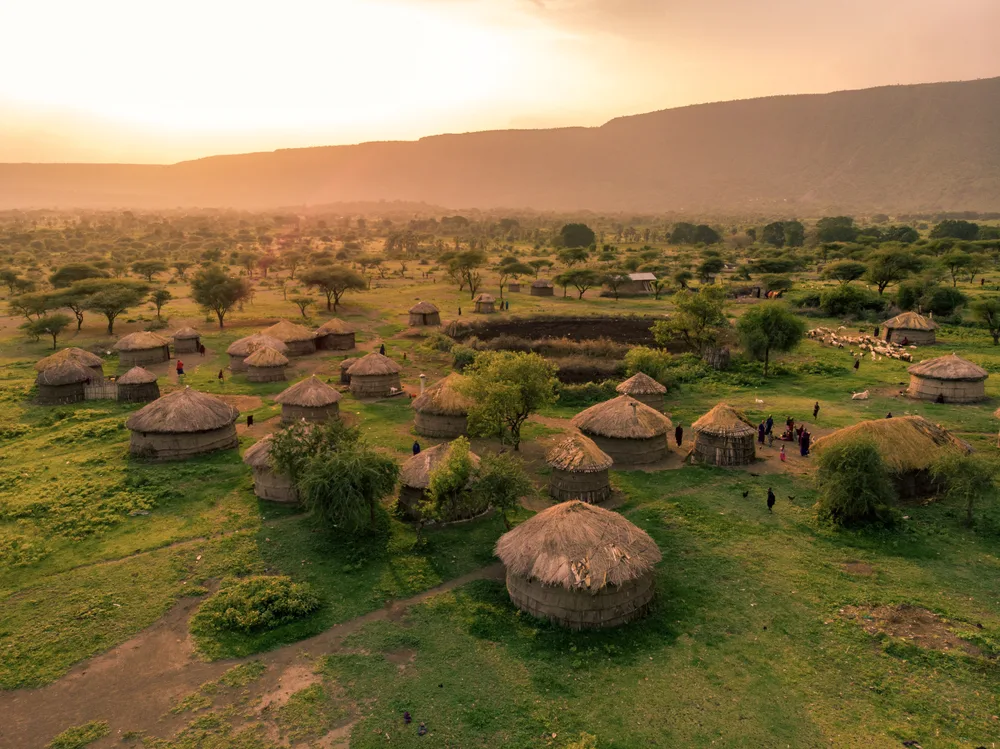
Gideon Ikigai/Shutterstock
Still have some questions about the best time for a safari in Tanzania? Others did, too. Check out the most frequently asked questions to learn more about planning your trip at the perfect time of year!
What's the best month to go to Tanzania?
July may be the best month to go to Tanzania because it's warm (around 72F), dry, and gives you great chances to spot African wildlife on safari.
The Great Wildebeest Migration occurs in July and it's the ideal time to hang out on the nearby tropical island beaches of Zanzibar and Mafia.
What's the best month to visit the Serengeti?
June may be the best month to visit Serengeti National Park because it's just before the July rate-hike for peak safari season and still features cool, comfortable weather, little rainfall, and great wildlife viewing.
If cost isn't a concern, July is the best month to visit the Serengeti. This is when the Great Wildebeest Migration occurs, wildlife viewing begins its peak season, and temperatures are warm with cooler mornings and nights.
What's the best month to go on a safari?
Anytime between June and September is the best time for a safari in Africa, thanks to great wildlife spotting opportunities and cool, dry weather.
You'll pay higher prices for a safari during this peak time, so check out summer months (November-March) to lower your trip budget.
What's the best time of year to visit Tanzania and Kenya?
The best time of year to visit Tanzania and Kenya is June through September, when conditions are warm and dry with cooler mornings and nights. Wildlife is active and easy to spot on safari at this time of year.
While Tanzania is roughly 500 miles away from Kenya, the two areas experience similar weather patterns and June-September is the best time to visit both.
Which safari is better, Tanzania or Kenya?
Tanzania safaris may be better due to the sheer size and wildlife population in the Serengeti National Park. However, Kenya safaris are slightly cheaper and can be packed into a shorter trip.
If budget and a shorter trip length are your main priorities, go on safari in Kenya. For the best overall experience, go on safari in Tanzania.
So, What’s the Best Time for a Safari in Tanzania?
Overall, July to September is the best time for a safari in Tanzania. The weather is pleasant, animals are easiest to spot with dry vegetation and shorter grasses, and there’s very little rainfall.
Whatever you do, try to avoid going on safari in November or December in Tanzania. You’ll have a hard time spotting wildlife at this time of year with lots of greenery and tall grasses.
These summer months are the “short rains” season, bringing near-constant showers that make conditions muddy, humid, and hot. So what are you waiting for — book your Tanzanian safari today!



